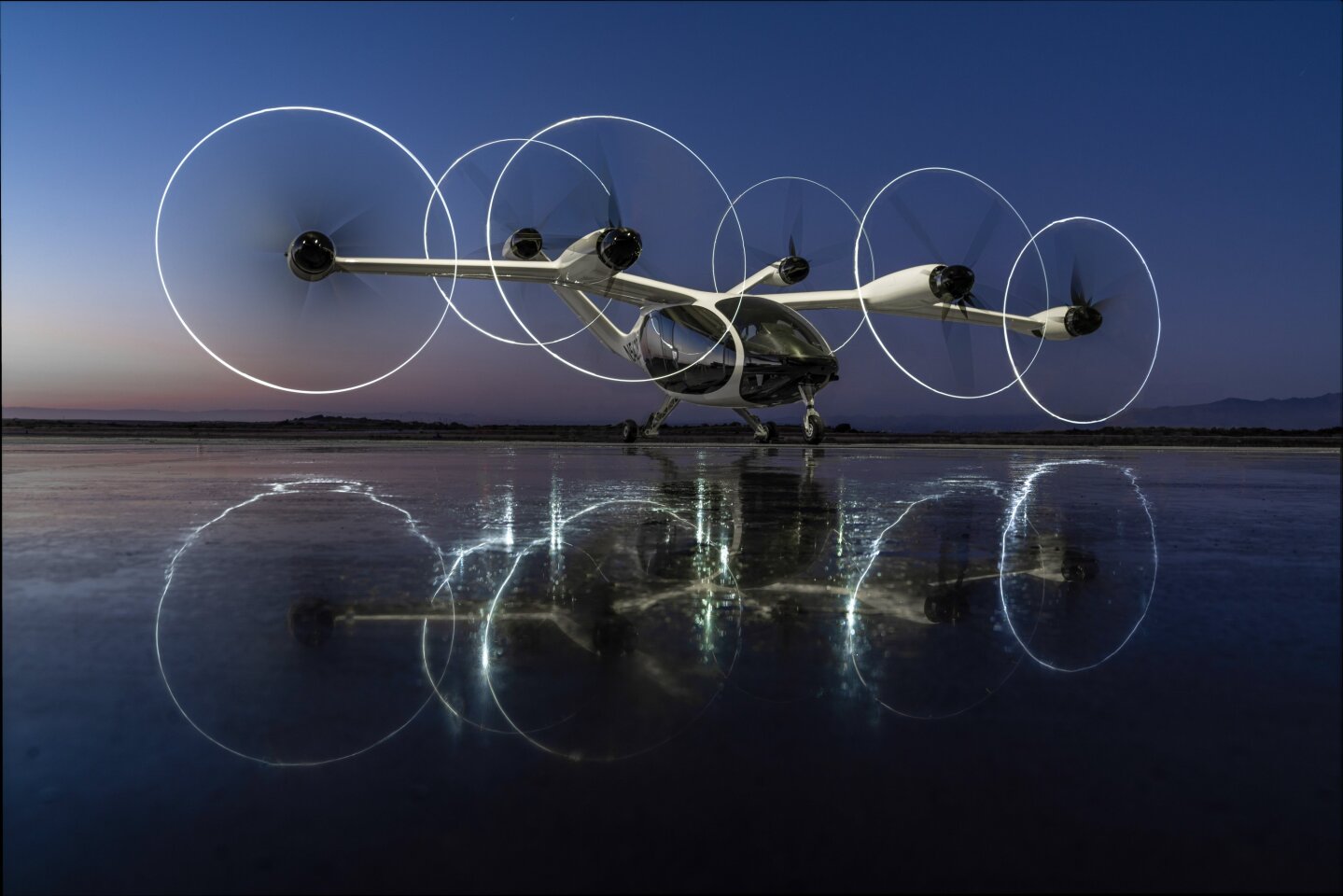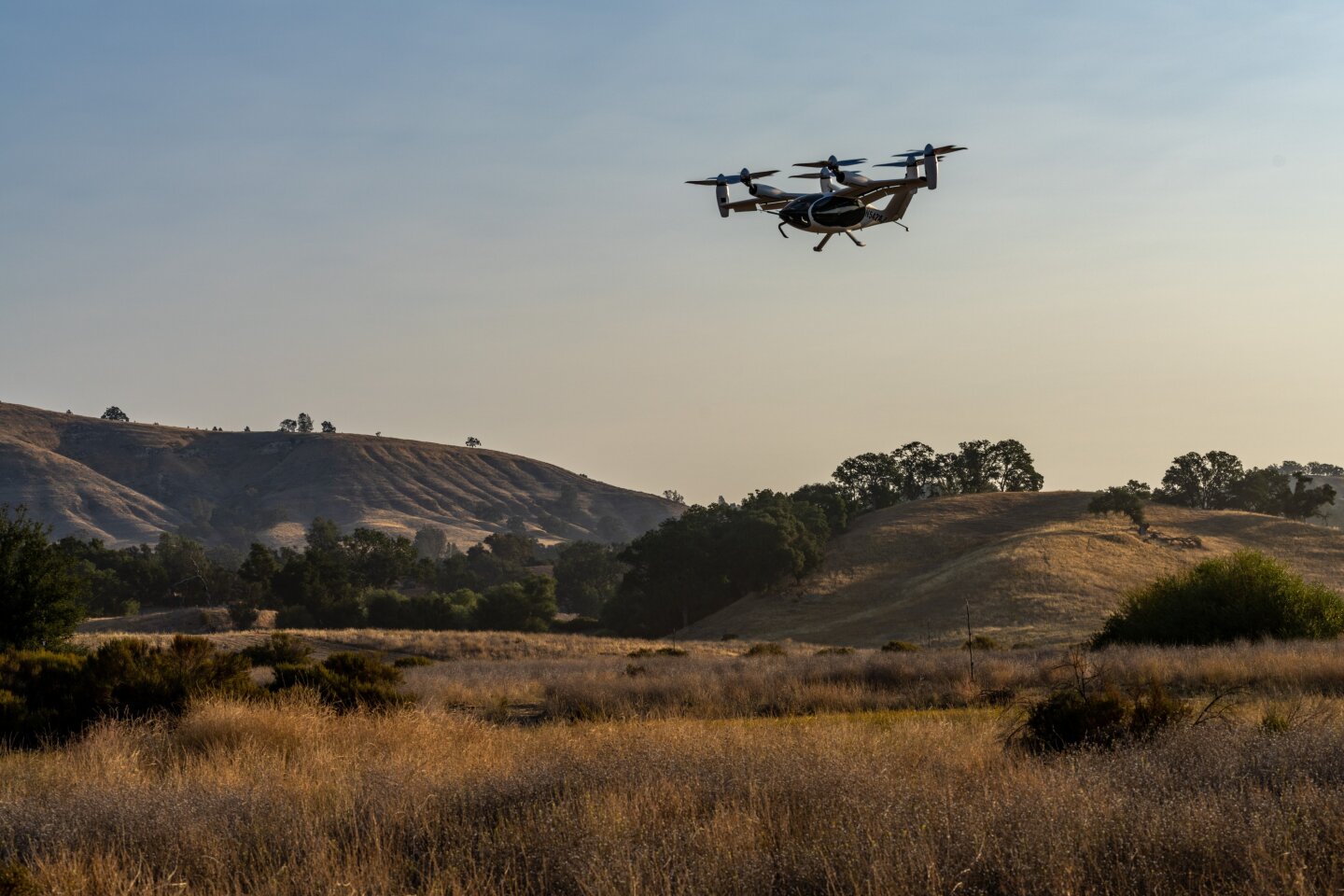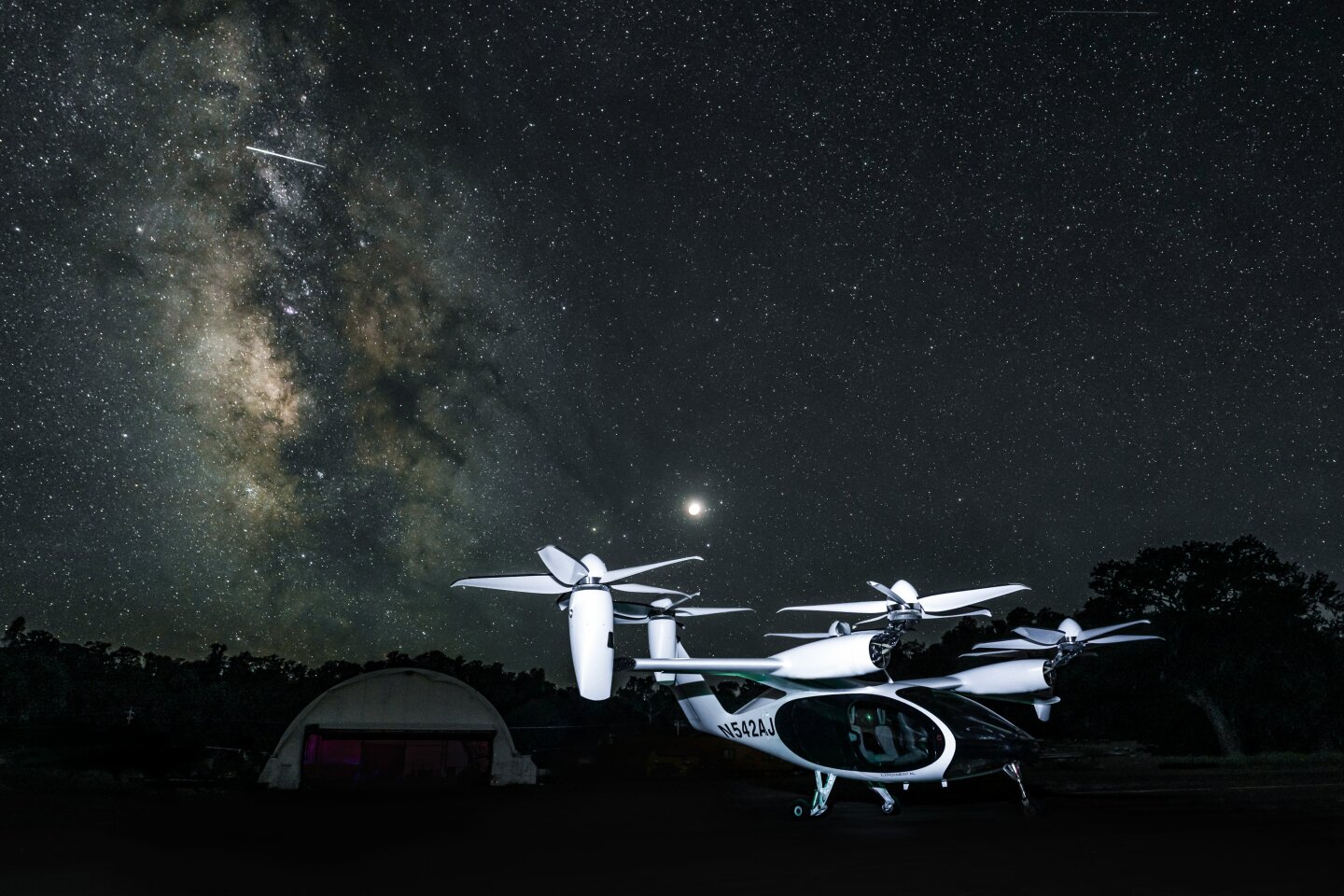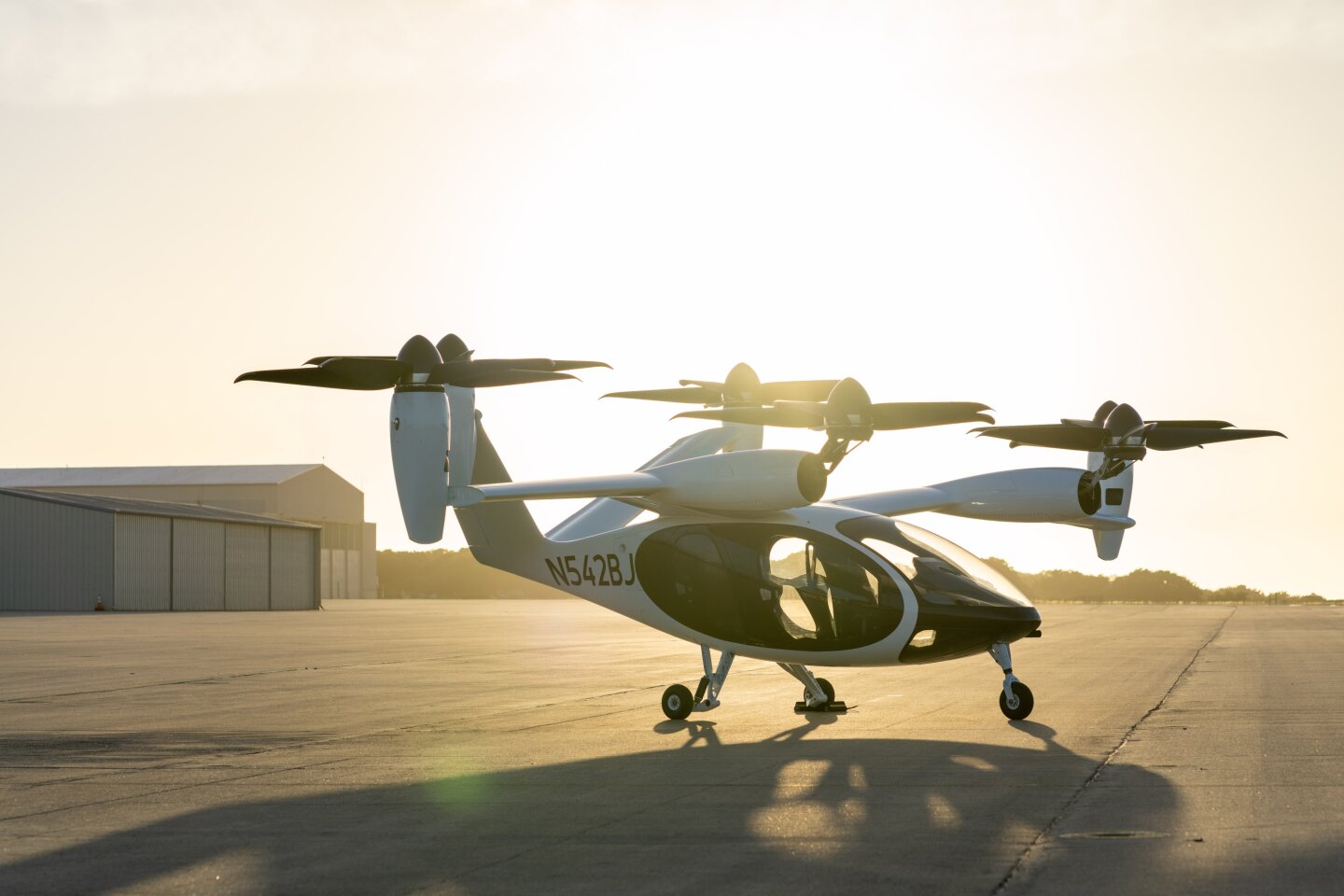As lovers of future technology, we’re fascinated by the promise and potential of electric VTOL aircraft – and we spend a lot of time covering the many and varied approaches that hundreds of companies are racing to bring to market. But that doesn’t mean this sector has an easy path to world-changing success and a global shift to Jetsons-style commuting, and in the name of balance, it’s worth examining the arguments against eVTOLs.
So when Futureflight caught Hill Helicopters CEO Jason Hill laying out his thinking on why eVTOLs are no threat to the helicopter industry, it struck us as a good opportunity to present somewhat of a rebuttal to our regular coverage. Hill made his comments as part of a “Global Meetup and Discovery Event” for the company’s upcoming (and gorgeous) HX50 luxury helicopter, an “aerial grand tourer” targeted at private owners.
This machine is proving popular. With 342 sales already confirmed, it’s got a 51 percent market share in its category, and is vastly outpacing its nearest rivals, selling 2.3 times more than the Robinson R44, 4 times more than the R66, and 4.6 times more than the Bell 505. Thus, Hill is far from a disinterested, objective observer, but his industry credentials are solid and his opinions should bear some weight.

Eric Adams / Joby Aviation
When asked what he thought about eVTOLs and whether he views them as competition, here’s a lightly edited transcript of what Hill had to say:
“eVTOL is important. We do need to decarbonize aviation. We do need to become more electric, but you’ve got to be realistic. The only way to get off the ground vertically more efficiently than a helicopter is in a balloon. So I think a lot of these fancy configurations that people are trying are all well and good, but I don’t believe they offer any material advantages over that of a a well designed modern helicopter.
“And the big elephant in the room, that everybody is ignoring, is the fact that it’s going to be a very, very long time. It’s going to be decades before we have batteries or a means of storing enough electrical energy for genuinely battery-electric aircraft to be practical.
“And I think when the real world factors of developing a machine and operating a machine start to take hold on an already limited capability, then those machines are going to find it very hard to make a living. And so I don’t really see that being as being an immediate threat for us. I think that many of those companies will struggle when they try and hit commercial viability, when they try and operate real air services.
“I mean, many of you will have leased helicopters back and tried to operate helicopters commercially over the years, and, you know, trying to make money out of an existing general aviation aircraft is very difficult. To have the work and the machine available, and fly enough hours to offset your enormous fixed costs is difficult. And then if you try and do that with a machine that can only fly for five minutes, you have precious little chance.
“So I think in terms of eVTOL, it’s not a threat. But I think in terms of the opportunity that it provides for us it’s clearly showing how many people want to do point to point travel – and that is an opportunity for HC50. That’s an opportunity for a good commercial helicopter.

Eric Adams / Joby Aviation
“I think the other big important point about eVTOLs is the huge swathes of money that have been thrown at it. They’ve been spending money like it’s going out of fashion, and in order to manage their risk, they’re trying to partner with all of the same people that we’re trying to cut out to deliver a cost-effective helicopter. So they’re replacing their expensive turbine engines with motors that are now owned by the same people that used to make turbine engines.
“So from my point of view, I think those aircraft are going to wind up being every bit, or more expensive than a conventional turbine aircraft – but far less mission-flexible, far less capable. And so yeah, I don’t think that’s an immediate threat for us. I think the helicopter has a very bright future, the GT 50 engine has been designed to run on sustainable aviation fuel biofuels, and I think that’s our route to short term carbon neutrality.”
eVTOL advocates would surely point out that Hill hasn’t addressed some of the sector’s most important advantages. These aircraft are designed to make much, much less noise than helicopters, and eVTOL operators are banking on them being approved for rooftop-to-rooftop inner-city flights at high frequency and over heavily populated areas.
Their all-electric powertrains, say eVTOL companies, mean that they require vastly less expensive attention from maintenance technicians, and the energy costs too will be vanishingly low. Flight cost projections are a tiny fraction of what it currently costs to hire a heli from A to B – indeed, the whole point of electric VTOL aircraft, as the dream is being sold, is to radically reduce flight costs the the point where vertical commuting is completely democratized and a genuine daily option for a wide variety of people.

Eric Adams / Joby Aviation
But this sector is currently hyped beyond belief – thanks in large part to the voracious funding appetites of these new aviation startups, and a corresponding avalanche of press releases and CG renders. We bear some responsibility for that; we love the wild early days of new tech development, and the idea of commuting in flying cars has been bouncing around kids’ heads for decades. We want it to happen.
But the well-worn Gartner Hype Cycle may be instructive here; after an “innovation trigger” gets the ball rolling, excitement tends to build until the “peak of inflated expectations,” which frankly feels like about where we’re at right now with 2021 coming to a close.
What tends to sadly follow is a “trough of disillusionment,” in which a lot of people lose their investment money, and many if not most companies fail to deliver. Only those that survive and innovate wisely make it to the “slope of enlightenment” such that people begin to understand where the technology can be genuinely useful, and only after this phase do things reach the “plateau of productivity” where mainstream adoption begins.
So the next few years are likely to be pretty gruesome for some of our favorite electric VTOL startups; that’s a fact. There are mountainous hurdles at every step. Capital raising. Development. Prototyping. Testing. Certification. Production. Manufacturing. Logistics. Scaling up to serious volume. Safety. Building out useful vertiport networks. Getting aviation authorities and city councils to agree on high-volume flight paths over populated areas. Blowback from residents. Developing appropriate inspection schedules to identify faults and issues. Building up enough regular users to keep utilization rates where they need to be. Battery replacement schedules. Emergency procedures. Working out where to park these things when they’re not in service. Convincing aviation authorities to allow autonomous passenger flights. There are many more, and none of them look trivial in the slightest.

Eric Adams / Joby Aviation
Still, enough diverse companies have drawn in enough capital at this point, and made enough key partnerships, that it seems like a range of different eVTOL designs will at least get the chance to prove themselves. The pandemic and work from home revolution have encouraged a lot of people to move further out of cities, in many cases to the kinds of distances that eVTOLs would be perfectly adequate for, and it’s not like anyone’s expecting ground-based traffic to get better in the next 5-10 years.
Electric VTOL aircraft will eventually prevail, whether by hook, by crook or by hydrogen. Fossil-fueled aircraft are part of one of the key existential problems of our time, and they will be legislated into insignificance as the rubber hits the road on decarbonization over the coming decades. But Hill may yet be right when he says these things could prove too limited, and too similar to the helicopter, to spark a transport revolution in their early days. We shall see.
You can see Hill’s comments in the video below, if you’re interested. Skip to 1:19:07 or so for the eVTOL talk, or stick around to learn about the helicopter!
1st HX50 Global Meetup & Discover Event
Source: Hill Helicopters via FutureFlight
Source of Article